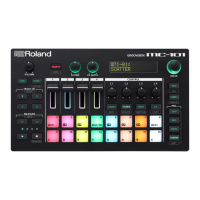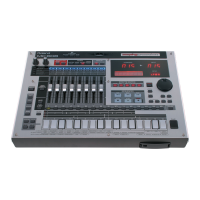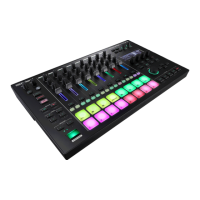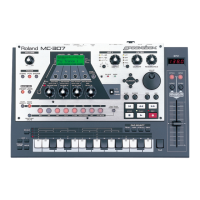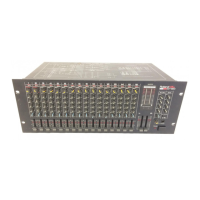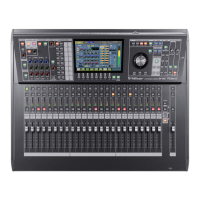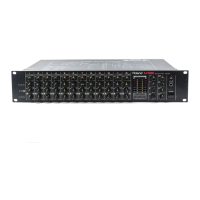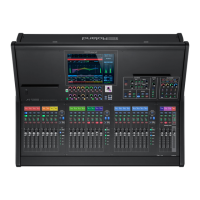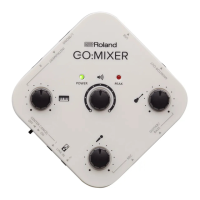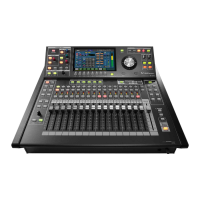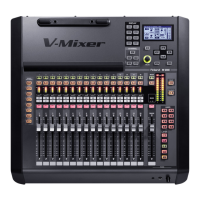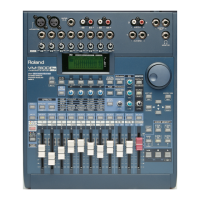41
Recording a pattern
Pattern Mode
Step recording
This is a recording method in which you input note messages one by
one.
* This method cannot be used to record data other than note messages
(e.g., control changes produced by operating the realtime modify
knobs).
Standby screen
fig.1-40
Function buttons
Recording procedure
1.
Select step recording (p. 37).
2.
Press [PLAY] to begin recording.
You are now ready to record.
fig.1-31
3.
Use function buttons [F4]–[F6], and [VALUE] and
[INC/DEC] to specify the length and velocity of the
notes to input.
4.
Use the velocity pads to input note messages.
The note number is selected by the pad you press. You can also
input chords.
When you input a note message, the input position will
advance by the value of the Note Type you specified.
5.
Repeat steps
2
and
3
to input note messages.
6.
When you are finished recording, press [STOP].
Parameter
Range Explanation
Rec Beat
2/4–7/4, 5/8–
7/8, 9/8, 12/8,
9/16, 11/16,
13/16, 15/16,
17/16, 19/16
Pattern time signature
* Can be specified only for
an empty pattern.
Rec Measure
Length
1–998 Pattern length
* An already-recorded pat-
tern can be made longer,
but not shorter. To shorten
it, use the pattern edit De-
lete Measure (p. 45) to de-
lete one or more measures.
Rec Velocity REAL, 1–127 Volume (velocity) of the
notes that you input from the
velocity pads.
If this is set to REAL, your
playing strength on the
pads will determine the ve-
locity that is input.
[F1 (Patch List)] Choose a patch/rhythm set from a list (p. 55).
[F3 (Mixer)]
(Part Mixer)
Display the Mixer screen (p. 33).
[F1 (Patch List)]
From a list, select the patch/rhythm
set that you want to use (p. 55).
[F2 (Step Back)] Cancel the previously input note.
[F3 (Tie)] Extend the length of the previously
input note by the current setting.
[F4 (Note Type)] Select the type of note value that you
want to input.
Range:
1/32–1/1
[F5 (Gate Time)] Specify the gate time (duration) of
the note messages you will input, as
a proportion of the note value you
selected as the Note Type.
Range:
5–200%
[F6 (Velocity)] Specify the velocity (volume) of the
note messages you will input.
Range:
REAL, 1–127
* If this is set to REAL, your playing
strength on the pads will vary the
dynamics.
[SHIFT] + [F1 (V-
Zoom In)]
Narrow the range of keys shown in
the display.
Use this when you want to view
certain notes at greater magnifica-
tion.
[SHIFT] + [F2 (V-
Zoom Out)]
Expand the range of notes shown in
the display.
Use this when you want to see
which notes have been input.
MC-909_Ref_e.book 41 ページ 2005年3月1日 火曜日 午後3時29分
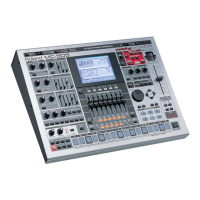
